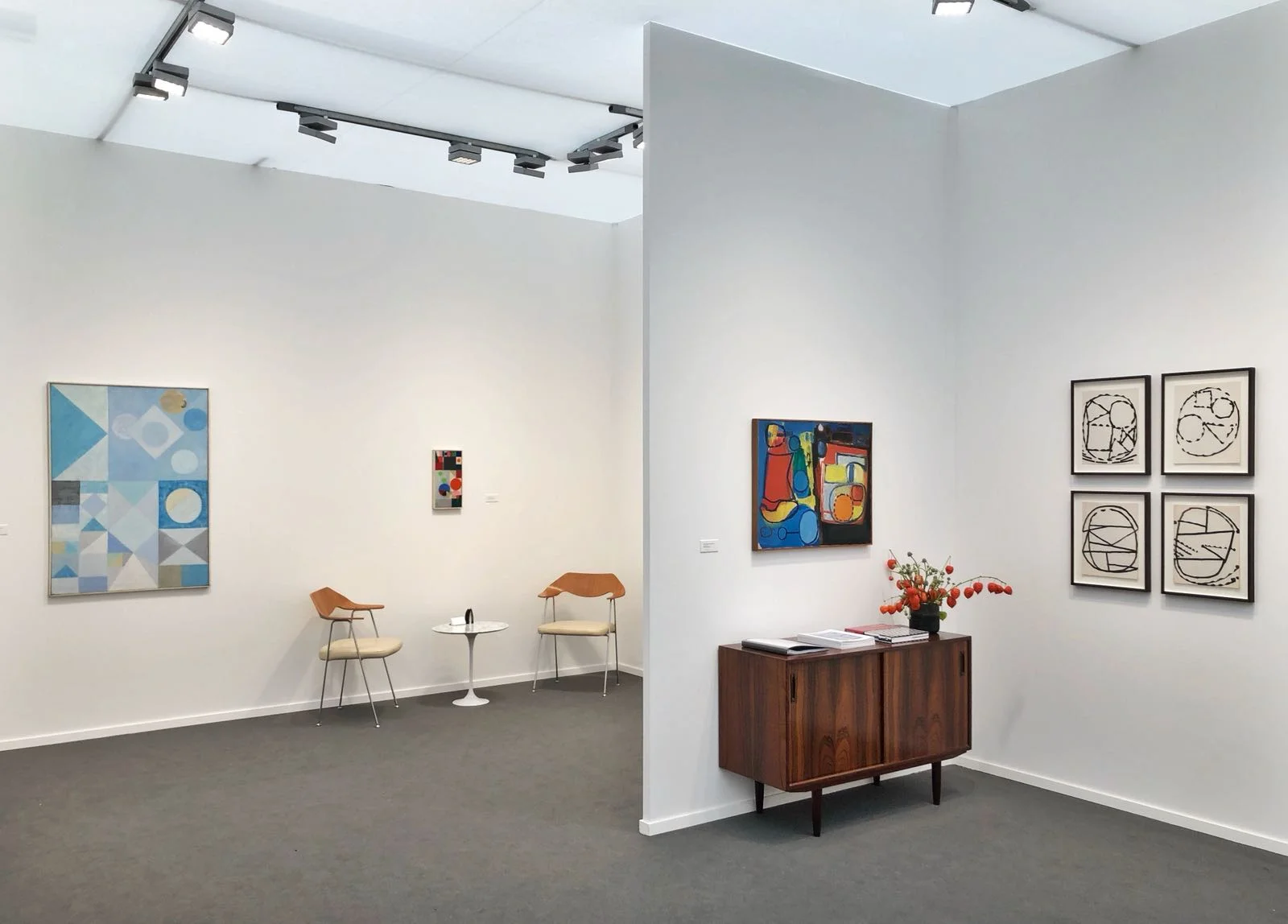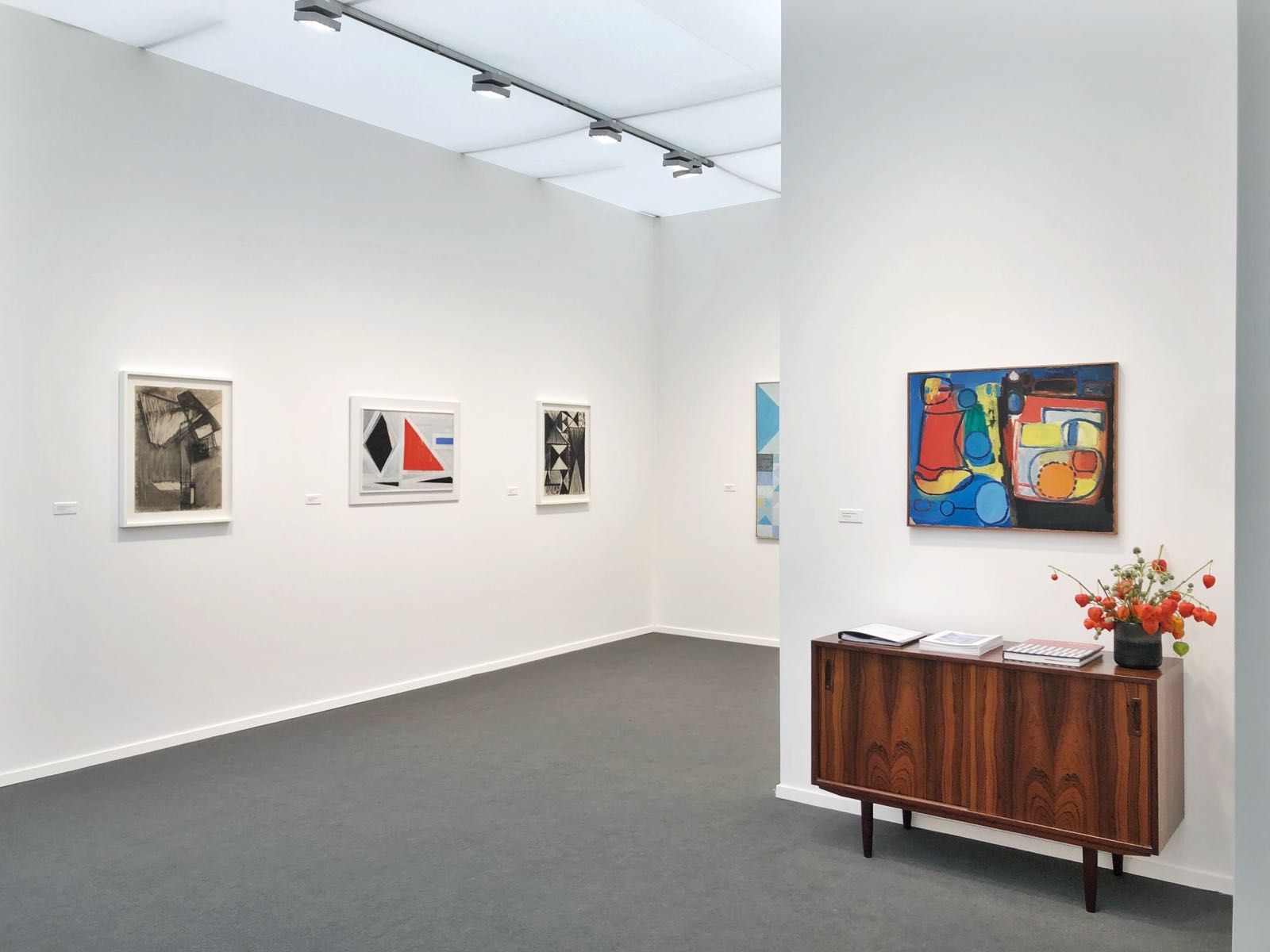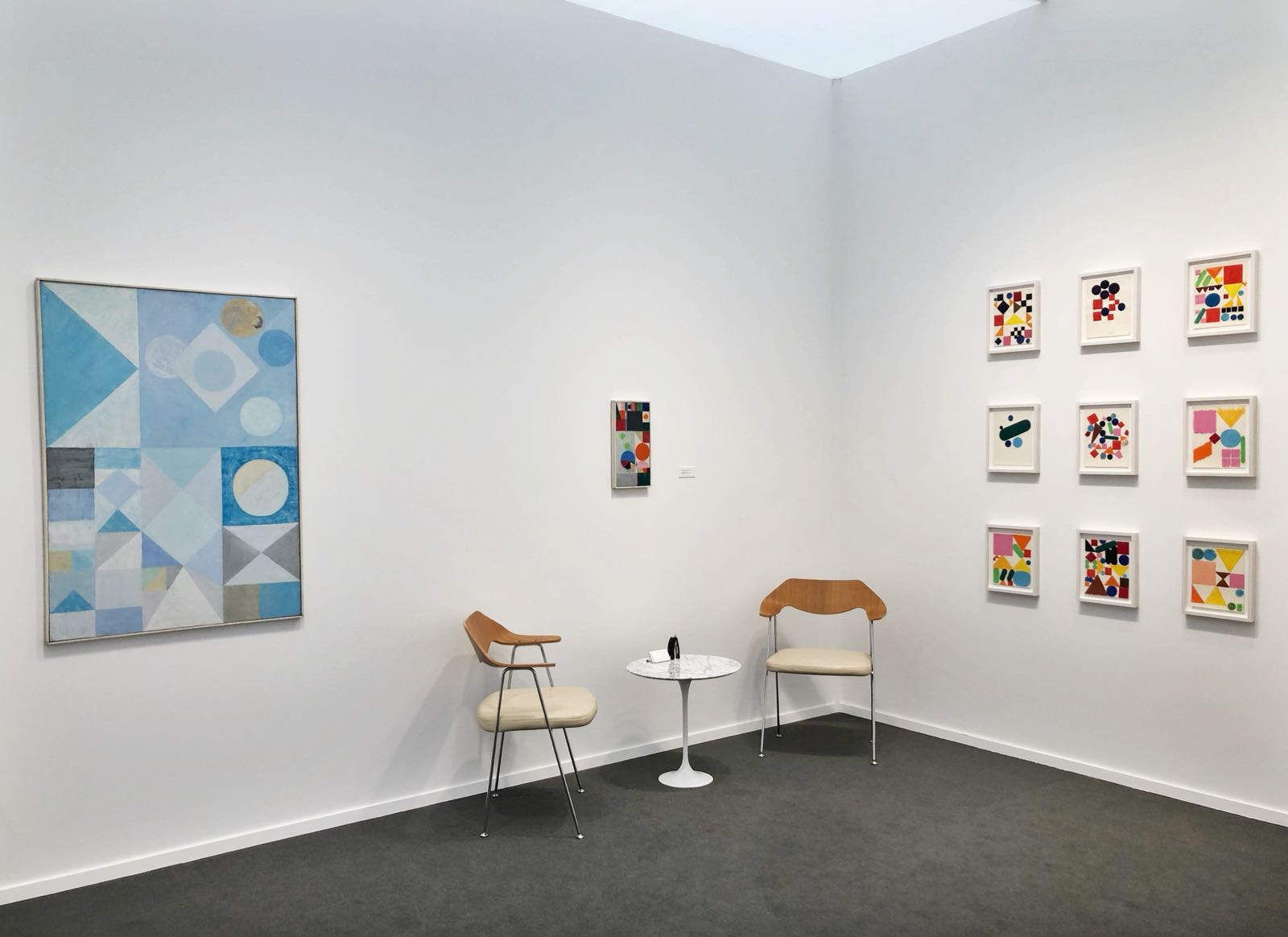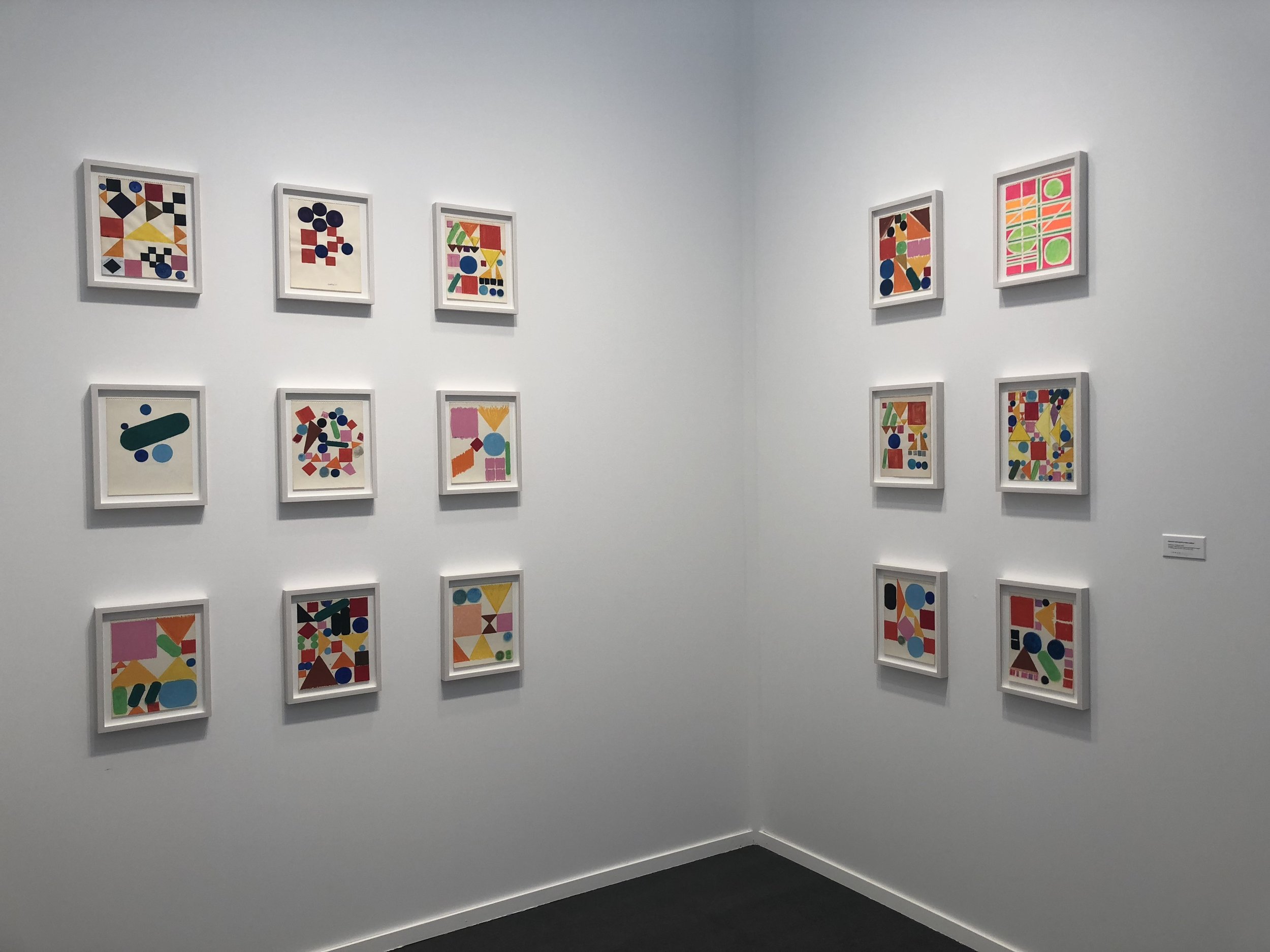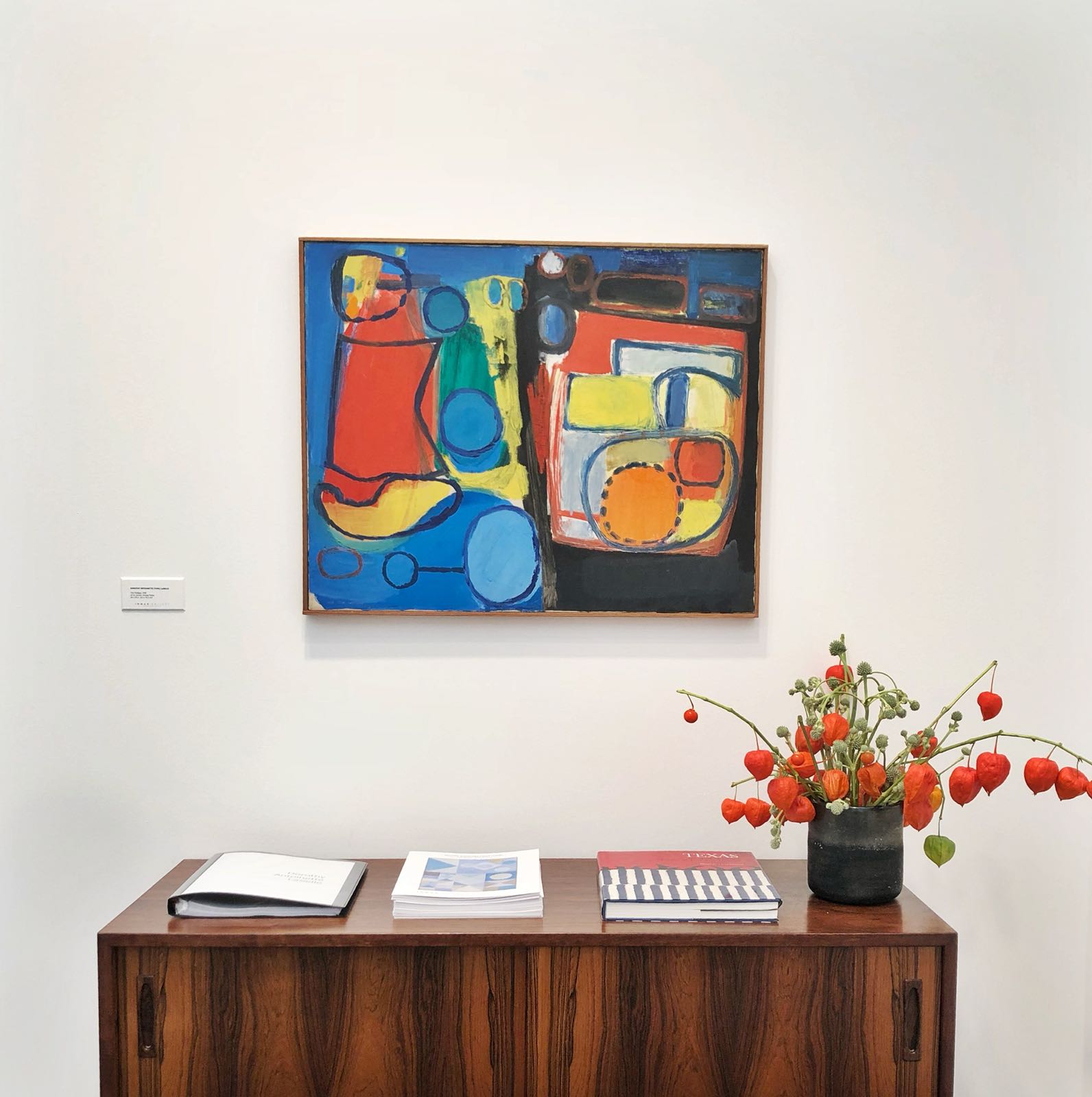Dorothy Antoinette LaSelle
Frieze Masters Spotlight Stand G20
October 5–7, 2018 Regent’s Park, London
Dorothy Antoinette LaSelle
Frieze Masters Spotlight Stand G20
October 5–7, 2018 Regent’s Park, London
For the 2018 Frieze Masters Spotlight, Inman Gallery is pleased to make the UK debut of the work of American modernist Dorothy Antoinette (Toni) LaSelle, (1901–2002). LaSelle’s work is a stellar example of the vitality of non-objective painting at midcentury, and is fast becoming recognized alongside other abstract artists of the Post-War period.
Growing up in the American Midwest far from major cultural centers, LaSelle was nevertheless a voracious and intuitive student of modernism, profoundly influenced by Post-Impressionism and Cubism. While completing her Master’s in art history from the University of Chicago (1926), LaSelle wrote her thesis on the indigenous masks of New Guinea in the Field Museum collection and their influence on the development of Cubism in Paris. After graduating, she traveled to Europe and spent six months studying in England, Italy, and France.
From 1928–1972, LaSelle taught art and design at a university in North Texas, while simultaneously exposing herself to the burgeoning concepts and processes of modernism. During sabbaticals and summers, she sought out teachers and mentors, the most influential being European émigrés Hans Hofmann and László Moholy-Nagy. She became an acknowledged expert on the new trends in art of the time, periodically giving museum lectures on Hofmann, Moholy-Nagy as well as other European artists. In 1942 Moholy-Nagy came to North Texas and taught workshops for LaSelle’s students. Additionally, she was instrumental in organizing a show at the Dallas Museum of Art for Hofmann in 1947.
During this time, LaSelle’s own practice began to garner attention. The Dallas Museum of Art mounted a solo exhibition of the artist’s charcoal drawings in 1948 and later included her work in group exhibitions alongside the European avant-garde. A solo gallery exhibition in New York (1950) was well received, meriting critical praise. In 1959, the Ft. Worth Art Center mounted a major retrospective of LaSelle’s work, for which Hofmann wrote the foreword to the exhibition catalogue, praising the artist for her creative sensibilities.
For Frieze Masters, Inman Gallery has collaborated with curator and art historian Carrie Scott to present work from the 1940s–1960s, a time of significant artistic transformation and maturity for LaSelle. The selection of works is exemplary of the artist’s exploration of space, color, and movement.
From 1944–1953, LaSelle studied closely with Hans Hofmann. The earliest painting in the booth, The Prodigal, 1948, shows LaSelle incorporating Hofmann’s teachings on harmonious balance, with both geometric and biomorphic shapes and lyrical color combinations. In a 1946 charcoal drawing, Figure, Space Planes, executed during a Hofmann class in New York, LaSelle experiments with positive and negative space, using erasure as a form of drawing. The artist articulates an intense volumetric space, rendering the three-dimensional flat on the surface of the paper.
She stated of the work at the time:
“My drawings are Space and Movement Compositions. They can also be called Space-Time drawings. The plane of the paper, the planes in the drawings, and the space in the drawings are all one thing. They cannot be separated. It takes all three together to create a plastic unit out of a flat piece of paper. They look abstract but they are concrete. They look abstract if one tries to find a still life or a figure. They are concrete, however, expressions of forms and space unified to make new dimensions out of the plane of the charcoal paper.” (Dallas Morning News, 1948)
From 1948 on, the depiction of volumetric space became less important and the relationships between objects in space became LaSelle’s primary focus. The artist describes our human relationship with space as seen from above in an essay titled “Are We Conscious?”:
“Many people say that feeling space is one of the most pleasant sensations they can have. They like a view from a hill-top, they enjoy looking out over a town from a high building. From a high place everything between the horizon and one’s feet is set against a background. The space between things becomes as important as the things themselves.” (LaSelle, “Are We Conscious?”)
Although many works retain a sense of the vertical plane, with gravity exerting its presence (e.g. Untitled (red triangle, 1953), increasingly, in the 1950s, the artist de-emphasized the notion of a horizon line, and the compositions began to resemble an aerial view. In Climate of the Heart #7, 1956, an almost fractal arrangement of objects is achieved, the figure-ground relationship completely abandoned.
LaSelle constantly experimented with dynamic arrangements of shapes and colors. For her, the notebook was a discrete space in which to work; several pages could be completed in one sitting as opposed to working on a canvas over time. In the 1960s, LaSelle shifted from painting on canvas to working in notebooks, where the artist swiftly filled the pages with combinations of rectangular and circular forms in luscious, vibrant hues. For the Frieze booth, the pages of a formerly intact notebook are displayed sequentially, presenting the evolution of the artist’s visual thoughts as they are played out over the fifteen pages. These notebooks demonstrate the visual motifs that the artist repeatedly returned to—deliberately simple circular forms juxtaposed with more angular geometries.
Although LaSelle spent the majority of her life in Texas, she was involved with the burgeoning artistic energy in existence as the European and American avant-garde milieus mixed in New York. LaSelle’s paintings and works on paper are commendable examples of abstract art at midcentury, and as a result the artist is finally being recognized as an important figure in the art historical narrative.
Dorothy Antoinette (Toni) LaSelle was born in Beatrice, Nebraska, in 1901 and died in 2002 in Denton, Texas, just shy of her 101st birthday. She earned a BA from Nebraska Wesleyan University in 1923 and an MA from the University of Chicago in 1926. After working briefly at Stephens College in Missouri, she traveled to Europe and spent six months studying in England, Italy, and France. What started as a temporary position at Texas State College for Women (now Texas Women’s University), in Denton, Texas, in 1928, turned into a full time position when she became responsible for development of the innovative art history program at the school. In her lifetime, two major museums acquired LaSelle’s work, the Dallas Museum of Art and the Museum of Fine Arts, Houston. Since her passing, her work has entered the collections of the San Antonio Museum of Art, the Dallas Museum of Art, the Modern Art Museum of Ft. Worth, and the Museum of Fine Arts, Houston, and the Menil Collection, Houston.

